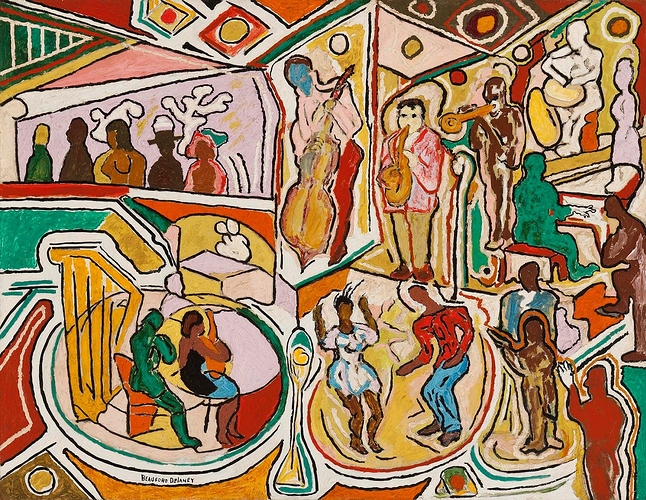In the November issue of the Brooklyn Rail, Fred Moten talks to Jarrett Earnest about his forthcoming book Black and Blur, which traces the poet and theorist’s longstanding interest in visual art. In the interview, Moten recalls how he was first drawn to visual art as a college student, and explains why for him visual art, poetry, and music are not distinct modes of expression. Read an excerpt from the interview below. Moten has a piece entitled “Base Faith” in the current issue of e-flux journal, cowritten with his regular collaborator Stefano Harney.
Rail: In The Break charts a specific path through the black radical tradition that terminates with Adrian Piper, but there is nothing really “visual” in the book—aside from a luminous moment where you talk about Beauford Delaney. It is really a “sonic” and “phonic” argument. With Black and Blur, there is a lot more engagement with visual art, especially contemporary art. In fact, you mention an early important experience that you had at the Fogg Museum with a Renoir. I’d like to understand the story of your relationship with visual art, and why that Renoir was important to you.
Moten: I mean, I love visual art. And I also really love art history, as a discipline—when I say that I mean to say, like any other discipline, one has a love-hate relationship to it, because it’s got all kinds of blindnesses and exclusions and brutalities. What I love about reading art historians is that they have real talent for looking at stuff closely, and I like to read them talking about what they’re looking at closely. It’s not like I have those skills—I don’t. Those are skills people learn, and you do develop your own way of looking over the course of time, and a lot of that just comes out of repeated looking. With the Renoir…I mean, Harvard is an evil place. Part of the way that evil manifests itself is that they just own a tremendous amount of shit. It’s unfair. And it should be broken up. But you’re there, and you take advantage of it—sometimes against your own inclinations, and sometimes just by accident—they’ve just go so much. I wandered into the Fogg one day. Like a lot of nerdily inclined undergraduates I had a period of being interested in van Gogh self-portraits, and they have a good one there. But what killed me was a Renoir [Gabrielle en Robe Rouge]. I just decided to go there two or three times a week to see that painting. I started reading about it, to understand how he did it, and the thing I was fascinated by was the way Renoir used color—it wasn’t that the first impulse was a representational one, or an impulse toward “portraiture” per se, but that it was a way of experimenting with color, with how a shape or form might be composed out of color. Not only was it the painting that I loved—the particular tones of her skin and the relation between her skin and the dress—but I loved that it gave me insight into how artists make art—something deeper than just wanting to make a picture of somebody.
Image: Beauford Delaney, Untitled (Jazz), c.1950. Via lesamisdebeauforddelaney.blogspot.com.
